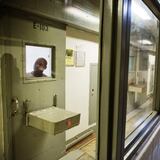There are numerous examples of golfers or tournament officials realizing that a golfer has broken a rule and facing disqualification or making that ruling.
Here are four notable ones and how they were handled:
BLAYNE BARBER
When: PGA Tour qualifying school, 2012
Situation: Barber was playing the 13th hole in the second round at Callaway Gardens in Pine Mountain, Ga., in the first stage of the PGA Tour Q-School last November when he brushed a leaf in a bunker. He immediately told his caddie and playing partners and took a one-shot penalty, and then he advanced to the next stage of qualifying with five shots to spare and kept alive his dream to play on the PGA Tour.
What happened next: He discussed the situation with Michael Herbert, a former Auburn teammate, who informed him the penalty for the infraction was two shots, not one.
His decision: Six days after the tourney concluded on Nov. 2, Barber called the PGA Tour to report that he had signed an incorrect scorecard. His disqualification moved the six players who had tied for 19th into a tie for 18th. The top 18 and ties at Callaway Gardens were to move on in qualifying. Six other golfers moved on to the next stage. "I just feel peace about it," he told Sean Martin of Golfweek, which reported the story. "Doing the right thing and doing what I know is right in my heart and in my conscience is more important than short-term success."
JEFF SLUMAN
When: Bay Hill Invitational, 1996
Situation: After two rounds, Sluman was two shots behind the leaders in what would become known as the Arnold Palmer Invitational. The night after the second round, he began replaying the round in his mind and thought he might have taken an incorrect drop after hitting into a water hazard.
What happened next: The next morning, he went back to the hole, confirmed the drop he used was closer to the hole and realized the drop was, indeed, incorrect.
His decision: He informed tournament officials and disqualified himself. He quoted Masters founder Bobby Jones: "It would be like congratulating someone for not robbing a bank."
DAVIS LOVE III
When: The Players Championship, 1997
Situation: On the 17th hole in the final round, he hit his ball with a practice stroke while putting. He did not replace the ball and completed the hole.
What happened next: He should have replaced his ball to the spot it had settled on the previous shot before putting. Not doing so is a one-shot penalty. He signed for an incorrect score on the hole.
The decision: It was out of his hands, as tourney officials found out about it after Love had signed his scorecard. Instead of a finishing in the top 10 (T7), he was disqualified for signing an incorrect scorecard. It cost him $105,000.
NICK PRICE
When: Million Dollar Challenge, 1992
Situation: While tied for the top with David Frost, Price found his drive behind an advertising sign 25 yards ahead. His caddie picked up the sign and moved it aside, thus incurring a penalty. The sign was considered an immovable object and he should have gotten a free drop. He didn't realize it, didn't get a ruling and signed an incorrect scorecard because he didn't include the penalty.
What happened next: Tournament officials offered Price the opportunity to change the scorecard.
The decision: He rejected the offer and left the scoring table, disqualifying himself. Instead of a chance to win $1 million, he got $105,000.
About the Author
